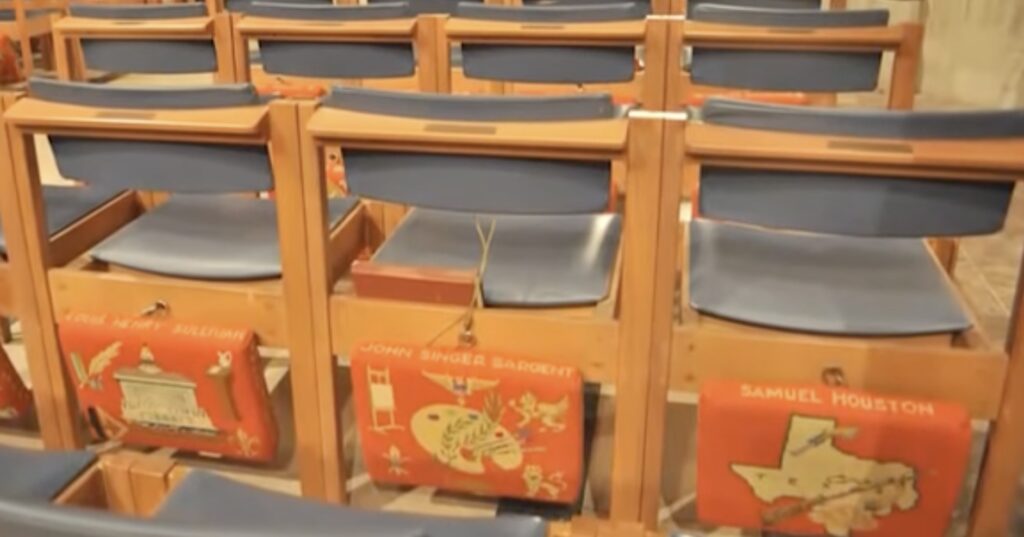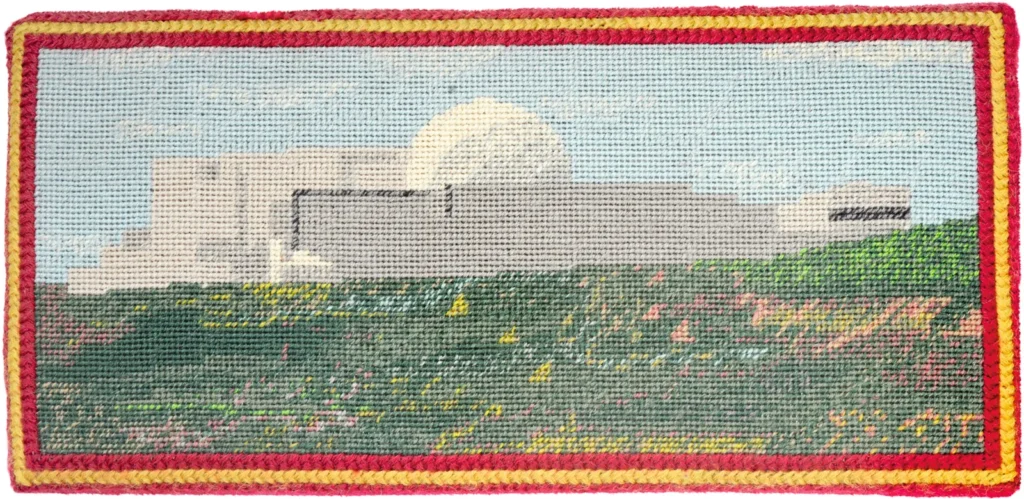Really, all it took was seeing the sonorous phrase—needlepoint kneelers—and I believed. It was on the cover of a privately published history of a parish’s longstanding ecclesiastical needlework program, which fashion prophet Rachel Tashjian-Wise revealed on a post while visiting family over the Christmas holidays.

Growing up near, even friendly with, but not in commune with the Episcopal Church, I was fascinated to find an entire world–or rather, a very specific and highly developed part of the world I’d previously never knew or imagined—of ecclesiastical needlework. It brings together faith and devotion, but also memory, community building, philanthropy, gender, class, and history, and that’s even before it gets to craft, technique, design, and the material. And it all plays out within the ecclesiastical, managerial, and social structures of the Church.

Basically, parishioners of a church donate time, talent, and resources, to creating handmade needlepoint cushion covers for the kneelers that line the pews of the church. In one place it may be the historic legacy of a dedicated crowdsourcing effort to beautify a new or rebuilt church, or a lifelong effort to memorialize someone. In another it could be a highly organized and socially prestigious fundraising activity. As with any such laborious handwork, needlepoint kneelers seem historically likely to reflect the value of the role, time, and taste of women in the community. It could be a sign of sacrifice or extreme privilege. [cf. prolific needlepointer HM ex-Queen Margrethe II of Denmark]
In the UK, needlepoint kneelers were apparently under threat, a dying art, according to someone who wrote a book about them. Things seem better in the US, a phrase I imagine I’ll be saying less and less going forward. It turns out our [sic] Episcopal church, the National Cathedral, has a needlework kneeler program.

And an epic post on the National Altar Guild Association’s blog about starting and operating a successful program feels like needlepoint kneelers, as an institution, remain sound. Besides the amazing new (to me) vocab, every observation or piece of advice from Bid Drake, “internationally known ecclesiastical needlepoint specialist [and] author of the Guide to Church Needlepoint Care and Maintenance” feels hard-won from direct experience: “I strongly suggest that you invite everyone in the congregation to help make the kneelers, then teach them Basketweave on small useful pieces like Chrismons, usher tabs, and collection plate silencers.” “If you only give out a third of the yarn with the canvas and tell the stitchers to take their pieces to the ‘Mistress of the Yarns’ when they need more, you will have an instant check on which pieces are being stitched, and which are buried in closets.” “Your local needlework shop should be able to suggest a finisher — one who loves and respects needlepoint, not an upholster who treats $4,000/yard needlepoint like $10 chintz.” [oof]
There’s so much about this cultural dynamic that fascinates me, and how it results in these highly specific objects. I’ve looked in the past without success for scholarly consideration of similar craft- and gender- and class-coded objects; who’d have thought that what was missing in my ersatz needlepoint history project was God. 🙏
